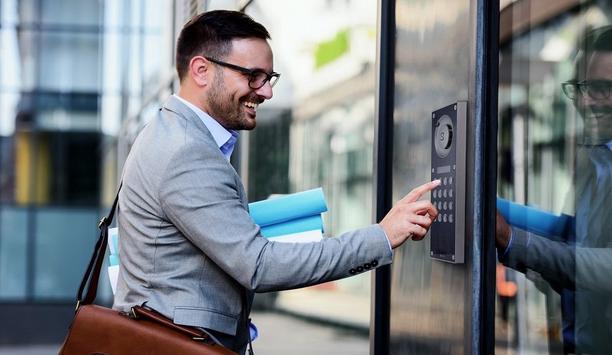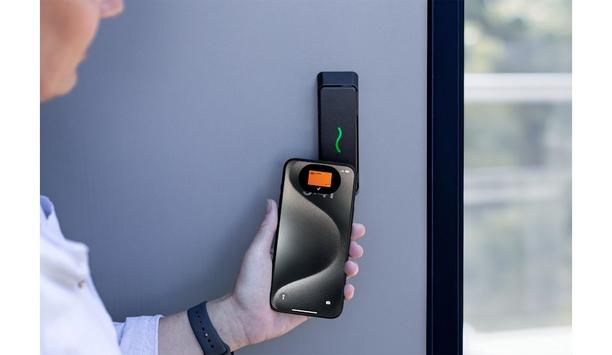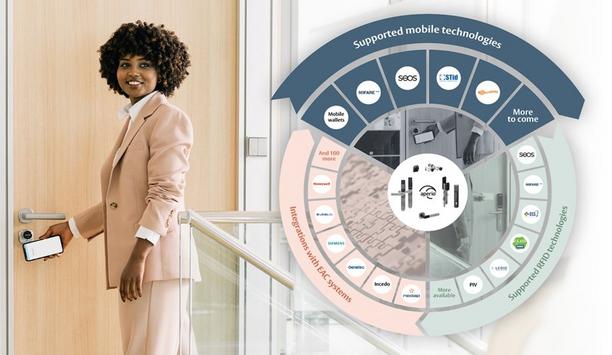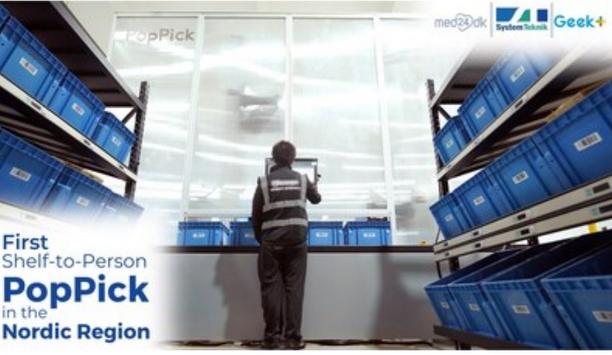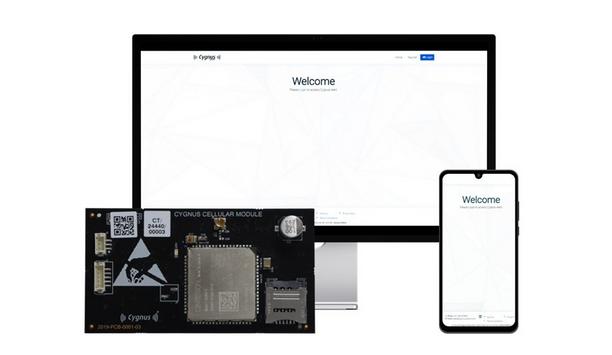What New With Biometrics?
Editor Introduction
Technological leaps in the last several decades have revolutionised biometrics. The technologies are constantly evolving, spanning facial recognition to iris scanning to fingerprints, to provide new levels of security and convenience. Biometrics are everywhere, from smartphones to border control, constantly evolving to meet the needs of our increasingly digital world. They are also more accurate and easier to use than ever. We asked this week's Expert Panel Roundtable: What’s new with biometrics?
There is so much excitement surrounding biometrics as it migrates from high-security applications into the mainstream. Manufacturers are emphasizing the user experience, and rightfully so. Biometrics are “the ultimate wearable,” which means they can offer unrivaled convenience. On-the-move solutions further improve that experience, and such systems are now available using modalities other than the face – a modality that has raised privacy concerns because of its ability to be used for surveillance. There is a growing demand for multifactor authentication in physical security applications. Pairing cards or PIN codes with biometrics makes it impossible for users to share credentials or for imposters to use lost or cloned cards. Multimodal devices are coming to market that can perform dual or multifactor authentication as quickly as traditional access readers. Also, look for an expansion of integrated solutions that leverage biometrics. Time and attendance, visitor management, point of sale, and logical access are all applications in which biometrics improve convenience, reduce fraud, and streamline administrative operations.
Biometrics have contributed to major strides in access control technologies, specifically with a shift towards more secure and convenient authentication methods. Traditional access control methods that use biometrics, like fingerprint and facial recognition, have evolved with improved accuracy and resistance to spoofing. Facial recognition technology has also gained prominence, leveraging AI for enhanced precision and adaptability to varying conditions. Multi-factor authentication biometric systems that combine multiple identifiers such as a credential with fingerprints, facial features, and iris scans offer flexibility, heightened security and reduced false positives. Additionally, the integration of behavioral biometrics – analysing situations in real-time with AI-powered analytics on a camera – adds an extra layer of authentication to modern access control systems to prevent tailgating, exceed occupancy limits, or verify proper safety equipment is worn, etc. These developments collectively contribute to a more robust, user-friendly, and sophisticated landscape in biometric access control.
The application of biometrics in the travel industry has proven to be a new and increasingly useful tool in achieving global seamless travel. This past year, companies like Eurostar implemented digital travel credentials (DTCs) that allow passengers to forgo carrying physical passports or tickets with them and instead turn to biometric-backed verification. As a result, the number of manual checkpoints required was reduced drastically, and security officials were provided with additional support in identifying falsified documents and IDs. The introduction of biometrics does not mean we should eradicate physical security measures altogether. Instead, biometrics should act as an additional measure for organizations to fortify and bolster traditional physical security practices, helping to catch threats like AI-generated morphed photographs or digital injection attacks used to evade endpoint security checks. In our increasingly digital age, a hybrid security approach will be critical to ensure secure, seamless travel for passengers across the globe.
In 2023, 85% of fraud was categorized as impersonation fraud. Advancements in AI and machine learning have triggered greater security threats, empowering bad actors to generate multimedia content that surpasses previous levels of realism to manipulate and steal someone's identity. Conversely, AI has streamlined and enhanced the usability of biometric information to achieve intended insights and outcomes, like verifying people quickly and accurately without the friction of requiring manual input or substantial hardware. With the growing complexity of identity verification, businesses and consumers are leveraging AI in biometrics. For example, AI-powered liveness detection technology, like facial recognition tools, depth perception, and motion and environment analysis, fulfills functions comparable to hundreds of checks in seconds. Facial recognition works with sophisticated algorithms to determine if a subject is physically present and alive when their biological or physiological characteristics are captured. These recent advances decrease the risk of fraud and impersonation while bolstering end-user satisfaction.
Editor Summary
Instead of relying on a single fingerprint or face scan, biometrics systems are integrated seamlessly into our lives. Multi-factor authentication, often including biometrics, makes physical and logical access control systems more secure than ever. The use of biometrics has evolved, too. No longer restricted to high-security applications, today’s biometrics applications span the globe and are as close as the nearest smartphone.
- Related companies
- Axis Communications
- Entrust Inc.
- Princeton Identity
- Veriff
- Related links
- IP Surveillance Software Video Surveillance software
- Monitoring Software Video Surveillance software
- Surveillance Software Video Surveillance software
- Axis Communications Video Surveillance software
- Axis Communications Power supplies & batteries
- Axis Communications Video servers (IP transmission)
- Axis Communications Storage
- View all news from
- Axis Communications
- Entrust Inc.
- Princeton Identity
- Veriff
Expert commentary
Security beat
Security bytes
- Getting To Know Dan Grimm, VP And General Manager Of Computer Vision At RealNetworks
- Big Wins And The Importance Of Showing Up: Insights From SecurityInformed.com Editor Larry Anderson
- Setting Goals, Business Travels And Radioactivity: Success Secrets From Tiandy's John Van Den Elzen
- Getting To Know Jeff Burgess, President/CEO At BCDVideo
Mobile access articles
Zenitel, a provider of intelligent communication solutions, announced the launch of two new door entry intercoms: the Turbine Extended Intercoms TEIV1+ and the TEIV4+. The new products display Zenite...
Physical security is essential for a modern production facility, users don’t want just anyone entering the building or accessing secure areas. But what about production machinery? Machine authe...
Barracuda Networks, Inc., a trusted partner and major provider of cloud-first security solutions, announced that Neal Bradbury has been elevated to the role of Chief Product Officer. In this new role...
Genetec Inc., a renowned technology provider of unified security, public safety, operations, and business intelligence solutions, announced that its new enterprise-grade SaaS solution, Security Center...
Gallagher Security announced the latest release of their award-winning security site management software, Command Center v9.10, marking a significant evolution for the security platform trusted to pro...
Gunnebo Entrance Control has announced its acquisition of DG Concept and Diadem, a French entrance control, design, installation, and service specialist, marking a significant step in reinforcing its...
Global technology solutions provider - Arrow Electronics, Inc. (ARW) announced that Broadcom selected it as the sole provider for its CloudHealth from VMware offering. CloudHealth is designed to help...
In an industry-first, Safetrust provisions employee and visitor badges directly into Apple Wallet via an email link or text message, eliminating the need to download an application. This innovative a...
HID, a worldwide pioneer in trusted identity solutions, announces the availability of its new HID Seos Essential Bundle, providing small to mid-size businesses (SMBs) in Europe with the benefits of ad...
Compatibility with a range of credential technologies can be a critical factor when selecting access control. As organizations across the world explore a move to mobile keys for access, it is more imp...
DigiCert, a major global provider of digital trust, reconfirmed its commitment to standards and compliance with the successful completion of 31 audits within a 12-month period. These audits include a...
Interface Systems, a major managed service provider of business security, actionable insights, and purpose-built networks for multi-location businesses, announced that it is releasing an enhanced cust...
Federation of Gujarat Industries (FG)), Vadodara has conferred the Outstanding MSME Excellence Award at the 18th FGI Awards presentation ceremony. The objective behind the institution of these awards...
Geekplus, the global pioneer in mobile robot and smart logistics solutions, has deployed the first Shelf-to-Person PopPick project in the Nordics for one of the biggest online pharmacy wholesaler...
The Cygnus ALERT notification and monitoring platform is a cloud-based solution designed to strengthen site safety. Using Cygnus ALERT, construction professionals and site administrators can receiv...
Multi-Residential Access Management And Security
DownloadGuide For HAAS: New Choice Of SMB Security System
DownloadPrecision And Intelligence: LiDAR's Role In Modern Security Ecosystems
DownloadHikvision: Solar Powered Product Introduction + HCP
DownloadFacial Recognition
DownloadVerkada TD52 Cloud-Based Video Intercom
exacqVision IP08-64T-R1XW-E X-Series 1U Rdnt IP NVR 64TB RAID5 Windows OS with 8 IP Ent Lic
Climax Technology TouchPanel-3 7” Color Graphic Touchscreen Panel









